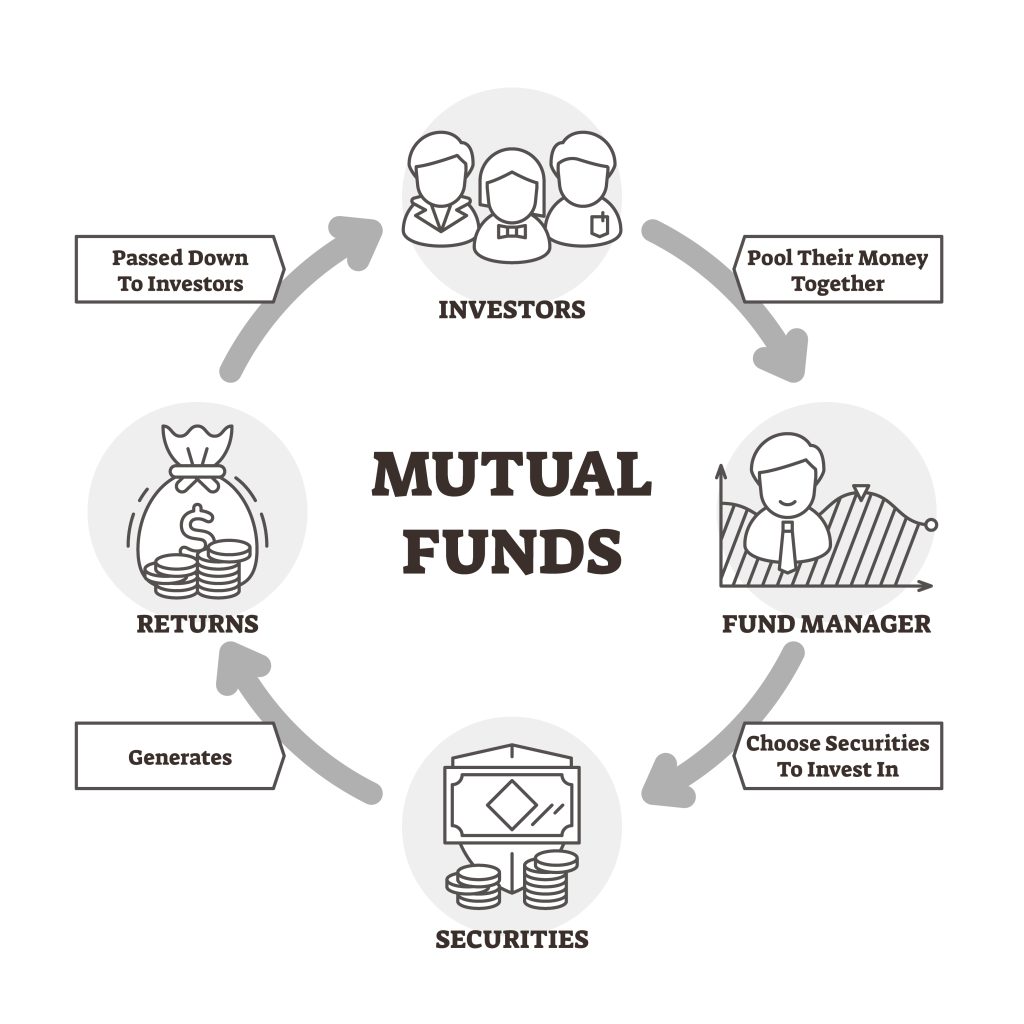Congratulations on having extra money and wanting to learn how to invest! Whether it’s a bonus from work, inheritance, or just good budgeting, investing your extra funds can help you grow your wealth. However, for beginners, the investing world can be overwhelming and intimidating. That’s where The Beginner’s Guide to Investing Extra Money comes in. This guide provides step-by-step advice and actionable tips for making informed investment decisions. This article will dive into Section 1 of the guide, which covers understanding investment basics.
Table of Contents
- Understanding Investment Basics:
- The Beginner’s Guide to Investing Money
- Discussing the Concept of Risk versus Reward When investing
- Setting Investment Goals: A Beginner’s Guide
- Calculating Your Risk Tolerance Risk
- Evaluating Investment Options: A Comprehensive Guide For Beginners
- Building a Diversified Portfolio: A Guide to Managing Risk
- Managing Investment Risks: A Guide to Protecting Your Investments
- Investing in Stocks: A Beginner’s Guide to Growing Your Wealth
- Investing in Bonds: A Beginner’s Guide to Low-Risk Investing
- Investing in Mutual Funds: A Beginner’s Guide to Building a Diversified Portfolio
- Investing in ETFs: A Beginner’s Guide to Adding Flexibility to Your Portfolio
- Investing in Alternative Investments: Exploring Non-Traditional Options for Diversifying Your Portfolio
- Tax Considerations for Investing: Understanding Tax Implications and Maximizing Your Returns
- Investing for Retirement: A Beginner’s Guide to Building a Secure Future
- Working with Financial Advisors: A Guide to Choosing the Right Partner
- Investing for the Long-Term: Strategies for Building a Secure Financial Future
- Final Thoughts on Learning How to Invest
Understanding Investment Basics:
Investing can seem like a complicated world full of jargon and unknown terms. However, in this section, we will break down the basics of investing to give you a solid foundation to build on. Here are the key topics we will cover:
Defining Investment Terms:
Before we dive into investment types and vehicles, it’s important to understand basic investment terms. Some key terms to know include:
- Stocks: Shares of ownership in a company.
- Bonds: Loans to a company or government that pay a fixed interest rate.
- Mutual Funds: Investment vehicles that pool money from multiple investors to purchase a diversified portfolio of stocks, bonds, or other securities.
- Exchange-Traded Funds (ETFs): Similar to mutual funds but traded on stock exchanges like individual stocks.
Understanding Different Types of Investment Vehicles:
Investment vehicles refer to the different ways you can invest your money. In this section, we will discuss the most common investment vehicles, including:
- Stocks
- Bonds
- Mutual Funds
- ETFs
- Real Estate
- Cryptocurrency
By understanding the different types of investment vehicles, you can make informed decisions on which ones align with your financial goals and risk tolerance.
Discussing the Concept of Risk versus Reward:
Investing always comes with some level of risk. However, the level of risk you are willing to take can significantly impact the potential rewards. This section will discuss the concept of risk versus reward and how to balance the two. We will also cover some common investment myths and misconceptions.
By the end of section 1 of The Beginner’s Guide to Investing Extra Money, you will have a solid understanding of investment basics, including investment terms, types of investment vehicles, and risk versus reward. Armed with this knowledge, you can confidently make informed investment decisions.
The Beginner’s Guide to Investing Money
Investing extra money can be a great way to grow your wealth and achieve your financial goals. However, if you’re new to the investing world, knowing where to start can be overwhelming and confusing. That’s where The Beginner’s Guide to Investing Extra Money comes in. In this guide, we break down testing into simple, easy-to-understand steps. This article will dive into Section 1 of the guide, which covers understanding investment basics.
More Information On Investment Terms:
- Stock: A stock represents ownership in a company. When you own stock in a company, you own a piece of that company and can potentially benefit from its growth and profitability.
- Bond: A bond is a type of loan issued by a company or government. When you purchase a bond, you are essentially lending money to that entity and will receive interest payments in return.
- Mutual Fund: A mutual fund is an investment vehicle that pools money from many different investors and uses that money to buy a diversified portfolio of stocks, bonds, or other securities.
- ETF: An ETF, or exchange-traded fund, is similar to a mutual fund in that it pools money from many investors to buy a diversified portfolio of securities. However, ETFs are traded like individual stocks on stock exchanges.
More Information on The Most Common Types of Investment Vehicles:
Stocks: As we mentioned earlier, stocks represent ownership in a company. When you own a company’s stock, you can benefit from its growth and profitability through stock price appreciation and dividends.
Bonds: Bonds are loaning that companies or governments issue. When you purchase a bond, you are essentially lending money to that entity and will receive interest payments in return.
Mutual Funds: Mutual funds pool money from many different investors and use that money to buy a diversified portfolio of stocks, bonds, or other securities. By investing in a mutual fund, you can benefit from diversification without picking individual stocks or bonds.
ETFs: ETFs are similar to mutual funds in that they pool money from many investors to buy a diversified portfolio of securities. However, ETFs are traded like individual stocks on stock exchanges.
Real Estate: Real estate can be a great investment vehicle for those willing to take on the risks and responsibilities of owning property. Real estate investments can take many forms, from buying rental properties to investing in real estate investment trusts (REITs).
Cryptocurrency: Cryptocurrency is a relatively new and emerging type of investment vehicle. Cryptocurrencies like Bitcoin and Ethereum are decentralized digital currencies not controlled by any government or central authority.
Discussing the Concept of Risk versus Reward When investing
Some level of risk is always involved. However, the level of risk you are willing to take on can significantly impact the potential rewards. This section discusses the concept of risk versus reward and how to balance the two.
It’s important to understand that higher-risk investments offer higher potential rewards, while lower-risk investments offer lower potential rewards. However, it’s also important to remember that higher-risk investments have a higher chance of losing money.
Some common investment myths and misconceptions that we cover in this section include:
- The myth that investing is only for the wealthy: In reality, anyone can invest, regardless of their income or net worth.
- The misconception that investing is like gambling: While there is always some level of risk involved with investing is not the same as gambling. When you invest, you are putting your money to work to earn a return. Gambling, on the other hand, is a game of chance with no guaranteed return on investment.
- The myth that you need money to start investing: This is not necessarily true. There are many investment options available that require little to no minimum investment.
- The misconception that you need to monitor your investments constantly: While it’s important to keep an eye on them, checking them constantly is unnecessary. Frequent monitoring can often lead to unnecessary stress and anxiety.
You should now have a solid understanding of investment basics, including investment terms, types of investment vehicles, and risk versus reward. This knowledge will help you make informed investment decisions as you move forward with your investing journey.
It’s important to remember that investing is a journey, not a destination. There is always more to learn, and your investment strategy will evolve as your financial goals and risk tolerance change. With The Beginner’s Guide to Investing Extra Money as your guide, you can take the first steps towards achieving your financial goals and building a brighter financial future.
So, where do you go from here? In the next section, we’ll dive into setting financial goals and aligning them with your investment strategy.

Setting Investment Goals: A Beginner’s Guide
Investing can be a great way to grow wealth and achieve financial goals, but it’s important to approach it with a plan. Section 2 of The Beginner’s Guide to Investing Extra Money discusses setting investment goals and how to create a realistic investment plan that aligns with your financial goals. In this article, we’ll dive into the topic of setting investment goals and discuss how to calculate your risk tolerance and create a plan that works for you.
Defining Your Investment Goals Before you can begin investing, defining your investment goals is important. What are you hoping to achieve with your investments? Here are a few common investment goals:
- Saving for retirement
- Building an emergency fund
- Planning for a big purchase (such as a down payment on a house or a child’s college education)
- Growing your wealth over the long term
By defining your investment goals, you can create a clear plan for achieving them.
Calculating Your Risk Tolerance Risk
Calculating your risk tolerance refers to the risk you will take with your investments. Everyone’s risk tolerance is different, and it’s important to understand your own before making investment decisions.
Here are a few factors that can impact your risk tolerance:
- Age: Generally speaking, younger investors can afford to take on more risk because they have more time to recover from losses.
- Financial Situation: Your financial situation, including your income, savings, and debts, can impact your risk tolerance.
- Investment Goals: Your investment goals can also impact your risk tolerance. If you’re investing for retirement, you may be willing to take on more risk because you have a longer time horizon.
Creating a Realistic Investment Plan Once you have defined your investment goals and calculated your risk tolerance, it’s time to create a realistic investment plan.
Here are a few steps to follow:
- Determine how much you can afford to invest: Before you can start investing, you need to determine how much you can afford to put towards your monthly investments.
- Choose the right investment vehicles: Based on your investment goals and risk tolerance, choose the right investment vehicles for your portfolio. This may include stocks, bonds, mutual funds, ETFs, real estate, or other options.
- Diversify your portfolio: Diversification is key to managing risk in your investment portfolio. By investing in a mix of different assets, you can spread out your risk and increase your returns.
- Monitor your investments: Regularly monitor them to ensure they are performing as expected. Adjust your portfolio as needed based on changes in your investment goals, risk tolerance, and market conditions.
Setting investment goals and creating a realistic investment plan is crucial in achieving your financial goals. By defining your investment goals, calculating your risk tolerance, and creating a diversified portfolio, you can make informed investment decisions that align with your financial goals.
Investing is a journey; your investment strategy may evolve as your financial situation changes. With The Beginner’s Guide to Investing Extra Money as your guide, you can take control of your financial future and build the wealth you deserve.

Evaluating Investment Options: A Comprehensive Guide For Beginners
Now that you have defined your investment goals and calculated your risk tolerance, it’s time to explore different options. In Section 3 of The Beginner’s Guide to Investing Extra Money, we evaluate investment options.
This article will discuss different investment vehicles, including stocks, bonds, mutual funds, ETFs, and more. We’ll also discuss how to evaluate their performance and compare them to your investment goals to make informed investment decisions.
Investing in Stocks
Stocks represent ownership in a company and can offer high returns over the long term. However, stocks are also more volatile and riskier than other investment options. When evaluating stocks, here are a few key factors to consider:
- Company fundamentals: Look for strong financial companies, including positive earnings growth and solid balance sheets.
- Industry trends: Consider the overall trends in the company’s industry. Are there any major disruptors that could impact the company’s performance?
- Valuation: Look at the company’s price-to-earnings (P/E) ratio to determine if the stock is over- or undervalued.
Investing in Bonds
Bonds are essentially loans that companies or governments issue. When evaluating bonds, here are a few key factors to consider:
- Credit rating: Look at the bond’s credit rating to determine the issuer’s ability to repay the loan.
- Yield: Consider the bond’s yield or the interest the bond pays, compared to other investment options.
- Maturity: Look at the bond’s maturity date to determine how long you’ll need to hold it before it matures.
Investing in Mutual Funds
Mutual Funds Mutual funds pool money from many different investors to buy a diversified portfolio of stocks, bonds, or other securities. When evaluating mutual funds, here are a few key factors to consider:
- Expense ratio: Look at the fund’s expense ratio to determine how much you’ll pay in fees.
- Performance: Consider the fund’s historical performance compared to its benchmark index.
- Portfolio: Look at the fund’s holdings to determine if they align with your investment goals and risk tolerance.
Investing in ETFs
ETFs are like mutual funds in that they pool money from many investors to buy a diversified portfolio of securities. However, ETFs are traded like individual stocks on stock exchanges. When evaluating ETFs, here are a few key factors to consider:
- Expense ratio: Look at the ETF’s expense ratio to determine how much you’ll pay in fees.
- Liquidity: Consider the ETF’s trading volume to ensure it’s easy to buy and sell.
- Index tracking: Look at the ETF’s ability to track its underlying index accurately.
Other Investment Vehicles
There are many other investment options, including real estate, commodities, and alternative investments. When evaluating these options, consider the unique risks and potential rewards.
Evaluating Performance and Comparing to Investment Goals Once you’ve chosen your investment options, it’s important to regularly evaluate their performance and compare them to your investment goals. Here are a few key metrics to consider:
- Return: Look at the return on your investments compared to your investment goals and the overall market.
- Risk: Consider the risk of your investments compared to your risk tolerance.
- Diversification: Look at the diversification of your portfolio to ensure that you’re not overly concentrated in any asset class.
Evaluating Investment Options
Evaluating investment options is crucial in building a successful investment portfolio. By understanding the unique risks and potential rewards of different investment vehicles, you can make informed investment decisions that align with your investment goals and risk tolerance.
When evaluating different investment options, consider company fundamentals, industry trends, credit rating, expense ratio, and liquidity. Once you’ve chosen your investments, regularly evaluate their performance and compare them to your investment goals to ensure you’re on track to achieve your financial objectives.
It’s important to remember that investing involves risk, and there’s no guarantee that any investment will perform as expected. However, diversifying your portfolio and regularly evaluating your investments can manage risk and potentially increase your returns over the long term.

Building a Diversified Portfolio: A Guide to Managing Risk
Diversification is a crucial strategy for managing risk in your investment portfolio. By spreading your investments across different asset classes, you can potentially reduce the impact of market volatility and increase your returns over the long term.
Section 4 of The Beginner’s Guide to Investing Extra Money discusses the importance of building a diversified portfolio. In this article, we’ll dive into the topic of diversification and discuss how to build a portfolio that aligns with your investment goals and risk tolerance. We’ll also discuss asset allocation and rebalancing your portfolio.
The Importance of Diversification is spreading your investments across different asset classes, such as stocks, bonds, and real estate. By diversifying your portfolio, you can reduce the impact of market volatility on your investments.
Here are a few critical benefits of diversification:
- Reducing risk: By investing in a mix of different assets, you can spread out your risk and potentially reduce the impact of market volatility on your portfolio.
- Increasing returns: Diversification can also potentially increase your returns over the long term by taking advantage of different market cycles and trends.
- Aligning with your goals: By building a diversified portfolio that aligns with your investment goals and risk tolerance, you can potentially achieve your financial objectives more effectively.
Building a Diversified Portfolio When building a diversified portfolio, it’s important to consider your investment goals, risk tolerance, and time horizon.
Here are a few steps to follow:
- Determine your asset allocation: Your asset allocation refers to the mix of different asset classes in your portfolio. Your asset allocation should align with your investment goals and risk tolerance. For example, you should allocate more of your portfolio to stocks if you have a long time horizon and a high-risk tolerance.
- Choose the right investments: Based on your asset allocation, choose the right investments for your portfolio. Look for investments that align with your investment goals and risk tolerance, and diversify your investments within each asset class.
- Rebalance your portfolio: Over time, your asset allocation may shift as different investments perform better or worse than others. Rebalancing your portfolio is important to maintain your desired asset allocation regularly.
Asset Allocation Asset allocation is a crucial component of building a diversified portfolio.
Here are a few key asset classes to consider:
- Stocks: Stocks can offer high returns over the long term but carry more risk than other asset classes.
- Bonds: Bonds can provide a steady income stream and potentially reduce your portfolio’s overall risk.
- Real estate: Real estate can provide diversification and potentially generate rental income and capital appreciation.
- Alternative investments: Alternative investments, such as commodities and hedge funds, can provide diversification and potentially reduce risk in your portfolio.
Rebalancing Your Portfolio Rebalancing your portfolio is adjusting your asset allocation to maintain your desired mix of asset classes.
Here are a few tips to follow:
- Set a schedule: Determine how often you’ll rebalance your portfolio, such as once per year or when your asset allocation deviates from your desired mix by a certain percentage.
- Consider taxes: When rebalancing your portfolio, consider the tax implications of selling investments.
- Stay disciplined: Don’t let short-term market fluctuations dictate your rebalancing strategy. Stick to your long-term investment plan.
Building a diversified portfolio is a crucial strategy for managing risk in your investment portfolio. By spreading your investments across different asset classes, you can reduce the impact of market volatility and increase your returns over the long term.
When building a diversified portfolio, it’s essential to consider your investment goals, risk tolerance, and time horizon. Choose the right investments based on your asset allocation and diversify your investments within each asset class. Regularly rebalance your portfolio to maintain your desired asset allocation, and consider the tax implications of selling investments.
Investing involves risk, and there’s no guarantee that any investment will perform as expected. However, by building a diversified portfolio that aligns with your investment goals and risk tolerance, you can reduce the impact of market volatility and increase your returns over the long term.
Managing Investment Risks: A Guide to Protecting Your Investments
Investing always involves risks, but there are steps you can take to manage them. Section 5 of The Beginner’s Guide to Investing Extra Money discusses managing investment risks. In this article, we’ll dive into investment risks and discuss how to identify and manage them. We’ll also discuss strategies for mitigating risk, such as investing in low-cost index funds or working with a financial advisor.
Identifying Investment Risks Investment risks can come in many forms, including market, inflation, and interest rate risks.
Here’s a closer look at each:
- Market risks: Market risks refer to the potential for losses due to changes in the overall stock market. Market risks can be influenced by factors such as economic conditions, geopolitical events, and company performance.
- Inflation risks: Inflation risks refer to the potential for losses due to the erosion of purchasing power caused by inflation. Inflation can impact the value of your investments over time.
- Interest rate risks: Interest rate risks refer to the potential for losses due to changes in interest rates. When interest rates rise, the value of existing bonds and other fixed-income investments can decrease.
Managing Investment Risks There are several strategies for managing investment risks.
Here are a few key strategies to consider:
- Diversify your portfolio: Diversification is a key strategy for managing investment risks. Investing in a mix of different asset classes can reduce the impact of market volatility on your portfolio.
- Invest in low-cost index funds: Index funds are a popular investment option that can help reduce investment risks. Index funds track a market index, such as the S&P 500, and offer exposure to various stocks.
- Work with a financial advisor: A financial advisor can provide expert guidance on managing investment risks and creating a well-diversified portfolio that aligns with your investment goals and risk tolerance.
- Consider bond laddering: Bond laddering is a strategy for managing interest rate risks. Bond laddering involves buying bonds with different maturity dates to help reduce the impact of changes in interest rates on your portfolio.
Investing always involves risks, but there are steps you can take to manage them. By identifying investment risks and implementing strategies for mitigating risk, such as diversification, investing in low-cost index funds, working with a financial advisor, and bond laddering, you can protect your investments and achieve your financial objectives over the long term.
It’s important to remember that investing involves risk, and there’s no guarantee that any investment will perform as expected.

Investing in Stocks: A Beginner’s Guide to Growing Your Wealth
Investing in stocks can be a great way to grow your wealth, but it also comes with risks. Section 6 of The Beginner’s Guide to Investing Extra Money covers the basics of investing in stocks. In this article, we’ll dive into the topic of investing in stocks and discuss how to evaluate individual stocks, analyze stock market trends, and manage your portfolio of stocks.
Evaluating Individual Stocks
When investing in stocks, it’s important to evaluate individual stocks to determine if they are a good fit for your portfolio. Here are a few key factors to consider:
- Company fundamentals: Look at a company’s financial statements, such as its income statement, balance sheet, and cash flow statement, to determine its financial health and stability.
- Industry trends: Consider the industry in which the company operates and the current trends and challenges facing that industry.
- Management team: Look at the company’s management team and their track record of success.
Analyzing Stock Market Trends
In addition to evaluating individual stocks, it’s important to analyze stock market trends to make informed investment decisions. Here are a few key indicators to consider:
- Economic conditions: Consider the current state of the economy and how it may impact the stock market.
- Market trends: Look at historical trends and patterns to help predict future market behavior.
- News and events: Consider the impact of news and events on the stock market, such as political elections or natural disasters.
Managing Your Portfolio of Stocks
Once you’ve invested in stocks, it’s important to manage your portfolio to ensure it continues aligning with your investment goals and risk tolerance. Here are a few key strategies to consider:
- Regularly rebalance your portfolio: Over time, your portfolio’s asset allocation may shift as different stocks perform better or worse than others. Regularly rebalancing your portfolio can help maintain your desired asset allocation.
- Diversify your portfolio: Diversification is a key strategy for managing risk. Consider investing in a mix of different stocks across different sectors and industries.
- Stay disciplined: Don’t let short-term market fluctuations dictate your investment strategy. Stick to your long-term investment plan and avoid making hasty decisions based on emotions.
Investing in stocks can be a great way to grow your wealth over the long term, but it also comes with risks. When investing in stocks, evaluating individual stocks, analyzing stock market trends, and managing your portfolio is important. By diversifying your portfolio, regularly rebalancing your portfolio, and staying disciplined, you can achieve your financial objectives and build the wealth you deserve.
It’s important to remember that investing involves risk, and there’s no guarantee that any investment will perform as expected.

Investing in Bonds: A Beginner’s Guide to Low-Risk Investing
Bonds are a low-risk investment option that offers lower returns than other types of investments. Section 7 of The Beginner’s Guide to Investing Extra Money covers the basics of investing in bonds. In this article, we’ll dive into investing in bonds and discuss how they work, how to evaluate different types of bonds, and how to incorporate them into your investment portfolio.
Understanding How Bonds Work
Bonds are debt securities companies, governments, or other organizations issued. When you invest in a bond, you are lending money to the issuer for a set period. In return, the issuer pays you interest on the bond.
Evaluating Different Types of Bonds
There are several different types of bonds, each with its own characteristics and risks. Here are a few key types of bonds to consider:
- Corporate bonds: Corporate bonds are issued by companies and typically offer higher yields than government bonds, but they also come with higher risks.
- Government bonds: Government bonds are issued by governments and are considered very low-risk. However, they also offer lower yields than other types of bonds.
- Municipal bonds: Municipal bonds are issued by local governments and offer tax-free income to investors.
Incorporating Bonds into Your Investment Portfolio
Bonds can greatly diversify your investment portfolio and reduce risk. Here are a few key strategies to consider:
- Determine your asset allocation: Consider your investment goals and risk tolerance to determine how much of your portfolio should be invested in bonds.
- Choose the right mix of bonds: Consider investing in a mix of different types of bonds to diversify your portfolio further.
- Consider bond funds: Bond funds are a popular investment option that offers exposure to a diversified mix of different bonds.
Investing in bonds can greatly add low-risk investments to your portfolio and potentially reduce risk. By understanding how bonds work, evaluating different types of bonds, and incorporating bonds into your investment portfolio, you can make informed investment decisions and achieve your financial objectives.
It’s important to remember that investing involves risk, and there’s no guarantee that any investment will perform as expected.

Investing in Mutual Funds: A Beginner’s Guide to Building a Diversified Portfolio
Mutual funds offer a convenient way to invest in a diversified portfolio of stocks and bonds. Section 8 of The Beginner’s Guide to Investing Extra Money covers the basics of investing in mutual funds. In this article, we’ll dive into investing in mutual funds and discuss how to evaluate different types of funds, select the right funds for your investment goals, and manage your mutual fund portfolio.
Evaluating Different Types of Mutual Funds
There are several types of mutual funds, each with its own investment objectives and risks. Here are a few key types of mutual funds to consider:
- Equity funds: Equity funds invest primarily in stocks designed to provide long-term growth.
- Fixed-income funds: Fixed-income funds invest primarily in bonds and are designed to provide regular income.
- Balanced funds: Balanced funds invest in a mix of stocks and bonds and are designed to balance growth and income.
Selecting the Right Funds for Your Investment Goals
When selecting mutual funds, it’s important to consider your investment goals and risk tolerance. Here are a few key factors to consider:
- Investment objective: Look at the fund’s investment objective to ensure it aligns with your goals.
- Performance history: Consider the fund’s performance history and performance in different market conditions.
- Expense ratio: Look at the fund’s expense ratio to ensure it is not too high, as high expenses can eat into your returns.
Managing Your Mutual Fund Portfolio
Once you’ve invested in mutual funds, it’s important to manage your portfolio to ensure it continues aligning with your investment goals and risk tolerance. Here are a few key strategies to consider:
- Regularly rebalance your portfolio: Over time, your portfolio’s asset allocation may shift as different mutual funds perform better or worse than others. Regularly rebalancing your portfolio can help maintain your desired asset allocation.
- Diversify your portfolio: Diversification is a key strategy for managing risk. Consider investing in a mix of different mutual funds across different sectors and industries.
- Stay disciplined: Don’t let short-term market fluctuations dictate your investment strategy. Stick to your long-term investment plan and avoid making hasty decisions based on emotions.
Investing in mutual funds is a great way to build a diversified portfolio of stocks and bonds and achieve your financial objectives. You can make informed investment decisions and achieve the wealth you deserve by evaluating different types of mutual funds, selecting the right funds for your investment goals, and managing your mutual fund portfolio.
It’s important to remember that investing involves risk, and there’s no guarantee that any investment will perform as expected.

Investing in ETFs: A Beginner’s Guide to Adding Flexibility to Your Portfolio
ETFs offer a flexible and convenient way to invest in a diversified portfolio of stocks and bonds. Section 9 of The Beginner’s Guide to Investing Extra Money covers the basics of investing in ETFs. In this article, we’ll dive into investing in ETFs and discuss how they work, how to evaluate different types of ETFs, and how to incorporate ETFs into your investment portfolio.
Understanding How ETFs Work
ETFs, or exchange-traded funds, are similar to mutual funds but are traded on stock exchanges like individual stocks. When you invest in an ETF, you buy a basket of securities that tracks a particular index or sector. ETFs can offer a low-cost way to invest in a diversified portfolio of stocks and bonds.
Evaluating Different Types of ETFs
There are several ETFs, each with its own investment objectives and risks. Here are a few key types of ETFs to consider:
- Equity ETFs: Equity ETFs invest in stocks and are designed to provide long-term growth.
- Fixed-income ETFs: Fixed-income ETFs invest in bonds designed to provide regular income.
- Commodity ETFs: Commodity ETFs invest in commodities like gold, oil, or other natural resources.
Incorporating ETFs into Your Investment Portfolio
ETFs can greatly add flexibility to your investment portfolio and potentially reduce risk. Here are a few key strategies to consider:
- Determine your asset allocation: Consider your investment goals and risk tolerance to determine how much of your portfolio should be invested in ETFs.
- Choose the right mix of ETFs: Consider investing in a mix of different types of ETFs to diversify your portfolio further.
- Consider commission-free ETFs: Many online brokers offer commission-free ETFs, which can help reduce your investment costs.
Investing in ETFs can greatly add flexibility to your investment portfolio and achieve your financial objectives. By understanding how ETFs work, evaluating different types of ETFs, and incorporating ETFs into your investment portfolio, you can make informed investment decisions and achieve the wealth you deserve.
It’s important to remember that investing involves risk, and there’s no guarantee that any investment will perform as expected.

Investing in Alternative Investments: Exploring Non-Traditional Options for Diversifying Your Portfolio
Alternative investments can offer unique opportunities for investors to diversify their portfolios and generate higher returns. Section 11 of The Beginner’s Guide to Investing Extra Money covers the basics of investing in alternative investments. In this article, we’ll explore alternative investments and non-traditional options such as cryptocurrencies, commodities, and hedge funds.
Exploring Alternative Investment Options
Here are a few key alternative investment options to consider:
- Cryptocurrencies: Cryptocurrencies are digital or virtual currencies that use cryptography for security. While they can be volatile, they offer the potential for high returns.
- Commodities: Commodities such as gold, silver, and oil can offer diversification benefits and hedge against inflation.
- Hedge funds: Hedge funds are investment funds that use a variety of investment strategies to potentially generate higher returns. They typically have higher fees and require higher minimum investments.
Pros and Cons of Alternative Investments
Alternative investments can offer unique benefits, but they also come with risks. Here are a few key pros and cons to consider:
- Pros: Alternative investments can offer diversification benefits, the potential for higher returns, and unique investment opportunities.
- Cons: Alternative investments can be more complex and less liquid than traditional investments, and they can also come with higher fees and greater volatility.
Incorporating Alternative Investments into Your Portfolio
Incorporating alternative investments into your portfolio can help diversify your holdings and reduce overall risk. Here are a few key strategies to consider:
- Determine your risk tolerance: Consider your investment goals and risk tolerance to determine how much of your portfolio should be allocated to alternative investments.
- Choose the right mix of investments: Consider investing in different types of alternative investments to diversify your portfolio further.
- Work with a financial advisor: A financial advisor can help you navigate the complexities of alternative investments and make informed investment decisions.
Investing in alternative investments can offer unique opportunities for diversifying your portfolio and generating higher returns. By exploring non-traditional options such as cryptocurrencies, commodities, and hedge funds and considering the pros and cons of each investment option, you can make informed investment decisions and achieve the wealth you deserve.
It’s important to remember that investing involves risk, and there’s no guarantee that any investment will perform as expected.

Tax Considerations for Investing: Understanding Tax Implications and Maximizing Your Returns
Investing can be a great way to build wealth and achieve financial goals. However, it’s important to consider the tax implications of your investment decisions. Section 12 of The Beginner’s Guide to Investing Extra Money covers the basics of investing and taxes.
Tax-Efficient Investment Strategies
Here are a few key tax-efficient investment strategies to consider:
- Hold investments for the long-term: Holding investments for at least a year can qualify them for long-term capital gains tax rates, typically lower than short-term capital gains rates.
- Invest in tax-efficient funds: Certain investment funds, such as index funds, can be more tax-efficient than actively managed funds because they have lower turnover and fewer taxable events.
- Tax-loss harvesting: Selling losing investments can help offset capital gains and reduce tax liability.
Tax-Advantaged Investment Accounts
Tax-advantaged investment accounts can offer significant tax benefits. Here are a few key options to consider:
- 401(k) and IRA accounts offer tax-deferred growth, meaning you don’t pay taxes on gains until you withdraw the funds in retirement.
- Health Savings Accounts (HSAs): HSAs offer tax-free contributions, withdrawals for qualified medical expenses, and tax-deferred growth.
Handling Capital Gains Taxes
Capital gains taxes can be a significant consideration for investors. Here are a few key strategies for managing capital gains taxes:
- Offset capital gains with losses: Selling losing investments can help offset capital gains and reduce tax liability.
- Consider tax-loss harvesting: This strategy involves selling losing investments to offset capital gains and potentially reduce your overall tax liability.
- Understand the different capital gains: Short-term capital gains (gains from investments held for less than a year) are taxed more than long-term capital gains (gains from investments held for at least a year).
Investing can offer significant opportunities for building wealth, but it’s important to consider the tax implications of your investment decisions. By understanding tax-efficient investment strategies, tax-advantaged investment accounts, and how to handle capital gains taxes, you can maximize your returns and minimize your tax liabilities.

Investing for Retirement: A Beginner’s Guide to Building a Secure Future
Investing for retirement is one of many people’s most important investment goals. However, it can be overwhelming to figure out where to start. Section 10 of The Beginner’s Guide to Investing Extra Money covers the basics of investing for retirement. In this article, we’ll dive deeper into the topic and explore different types of retirement accounts, how to calculate retirement needs, and how to create a retirement investment plan that aligns with your goals.
Types of Retirement Accounts
Here are a few common types of retirement accounts to consider:
- 401(k)s: These accounts are offered by employers and allow employees to contribute a portion of their pre-tax income towards retirement savings.
- IRAs: Individual Retirement Accounts (IRAs) are another popular retirement savings option that offers tax benefits.
- Roth IRAs: Roth IRAs offer tax-free growth and tax-free withdrawals in retirement, but contributions are made with after-tax income.
Calculating Retirement Needs
Calculating your retirement needs can be a complex process, but it’s important to clearly understand your financial goals. Here are a few key considerations when calculating your retirement needs:
- Estimate your retirement expenses: Consider your current expenses and how they may change in retirement.
- Factor in inflation: Inflation can significantly impact retirement savings, so it’s important to factor in inflation when calculating your retirement needs.
- Consider your retirement timeline: The length of your retirement can impact how much you need to save.
Creating a Retirement Investment Plan
Once you clearly understand your retirement needs, it’s important to create a retirement investment plan that aligns with your goals. Here are a few key steps to consider:
- Determine your risk tolerance: Your risk tolerance can impact your investment decisions, so it’s important to understand your comfort level with risk.
- Consider a diversified portfolio: A diversified portfolio can help manage risk and increase the likelihood of achieving your retirement goals.
- Rebalance your portfolio regularly: Rebalancing your portfolio can help ensure that your investments align with your goals and risk tolerance.
Investing for retirement can be complex, but it’s an important investment goal for many people. By understanding different types of retirement accounts, how to calculate your retirement needs, and how to create a retirement investment plan, you can build a secure future for yourself and your loved ones.

Working with Financial Advisors: A Guide to Choosing the Right Partner
Investing can be complex and overwhelming, and working with a financial advisor can be a valuable way to navigate the investment landscape. Section 11 of The Beginner’s Guide to Investing Extra Money covers the basics of working with financial advisors. This article will explore different types of financial advisors, how to choose the right one for your needs, and what to expect when working with an advisor.
Types of Financial Advisors
There are different types of financial advisors, each with their own specialties and qualifications. Here are a few common types of financial advisors:
- Registered Investment Advisors (RIAs): RIAs are fiduciaries legally required to act in their client’s best interests.
- Broker-Dealers: Broker-dealers sell investment products and may offer financial planning services.
- Certified Financial Planners (CFPs): CFPs have completed rigorous training and education requirements and specialize in financial planning.
Choosing the Right Financial Advisor
When choosing a financial advisor, it’s important to consider your goals, preferences, and budget. Here are a few key factors to consider:
- Qualifications and experience: Look for advisors with the necessary qualifications and experience to meet your needs.
- Fee structure: Different advisors may charge different fees, so it’s important to understand how your advisor will be compensated.
- Personal connection: Your financial advisor should be someone you feel comfortable working with and who understand your unique financial situation.
Working with a Financial Advisor
Once you’ve chosen a financial advisor, it’s important to establish clear expectations and communication. Here are a few tips for working with a financial advisor:
- Set clear goals and expectations: Make sure your advisor understands your goals and expectations for your investment portfolio.
- Communicate regularly: Regular communication can help ensure your investments align with your goals and risk tolerance.
- Review your portfolio regularly: Reviewing your portfolio with your advisor can help ensure that your investments are performing as expected and align with your goals.
Working with a financial advisor can be a valuable way to navigate the complex investing world. By understanding different types of financial advisors, how to choose the right one for your needs, and what to expect when working with an advisor, you can make informed investment decisions and achieve your financial goals.

Investing for the Long-Term: Strategies for Building a Secure Financial Future
Investing for the long term is essential for building a secure financial future. Section 12 of The Beginner’s Guide to Investing Extra Money covers strategies for long-term investing. In this article, we’ll explore the importance of staying disciplined and focused on your goals and how to avoid emotional decision-making when investing.
Dollar-Cost Averaging
One of the most effective strategies for long-term investing is dollar-cost averaging. This strategy involves regularly investing a fixed amount of money, regardless of market conditions. This approach can help smooth out the impact of market volatility and ensure that you’re buying investments at various price points.
Staying Disciplined
During Market Volatility Another key aspect of long-term investing is staying disciplined during market volatility. Feeling anxious or worried during market downturns is natural, but it’s important to avoid making emotional decisions. Instead, stay focused on your investment goals and maintain a long-term perspective.
Staying Diversified
Finally, staying diversified is essential for long-term investing success. Diversification involves spreading your investments across different asset classes, industries, and geographies. This approach can help reduce risk and ensure your investments are well-positioned to weather market volatility.
Conclusion:
Investing for the long term requires discipline, focus, and a commitment to your goals. You can build a secure financial future and achieve your investment goals by using strategies like dollar-cost averaging, staying disciplined during market volatility, and staying diversified. With The Beginner’s Guide to Investing Extra Money as your guide, you can confidently navigate the investment landscape and build a strong financial foundation. Investing is a long-term game, and staying disciplined and focused on your goals is the key to success.
Final Thoughts on Learning How to Invest
Investing can seem daunting for beginners, but anyone can start building a secure financial future with the right guidance and strategies. The Beginner’s Guide to Investing Extra Money provides a comprehensive roadmap for navigating the investment landscape and achieving your financial goals.
From understanding the basics of investing to evaluating different investments, managing risks, and working with financial advisors, this guide covers everything you need to know to get started. With the strategies outlined in this guide, you can build a diversified investment portfolio, stay disciplined during market volatility, and achieve long-term financial success.
Remember, investing is a long-term game, and staying focused on your goals and avoiding emotional decision-making is important. By using the tips and strategies outlined in this guide, you can confidently navigate the investment landscape and build a strong financial foundation. So go ahead and take that first step towards a secure financial future today!
Last modified: 8 April 2023

